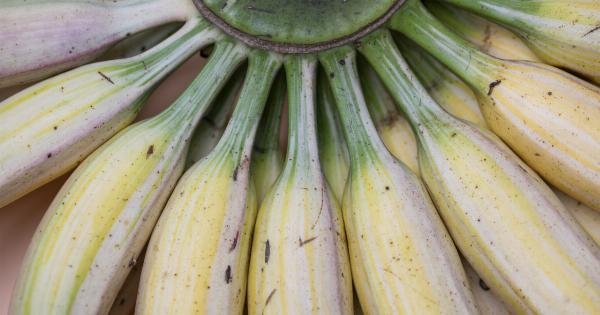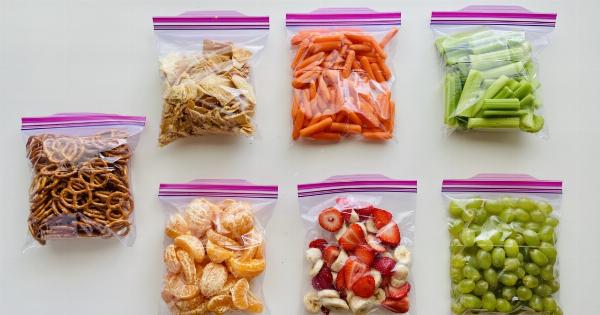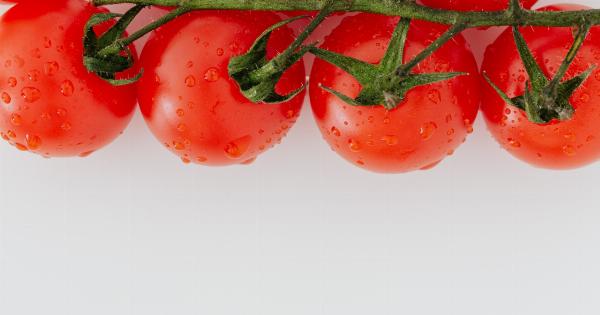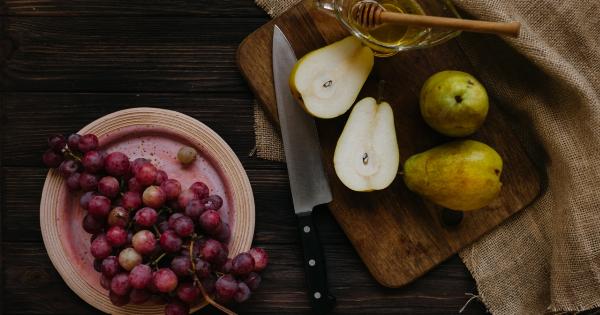When it comes to refrigeration, we often assume that it is a safe haven for our food.
But did you know that some foods completely transform when stored in the fridge? From changes in texture to altered flavors, here are some foods that go through a metamorphosis in your refrigerator:.
1. Bananas
We all know the struggle of buying a bunch of bananas only to find them quickly ripening. While throwing them in the fridge can slow down the ripening process, it also causes the skin to darken rapidly.
However, don’t be disheartened! Even though the peel may turn black, the fruit inside stays fresh and can still be used in smoothies or baking.
2. Tomatoes
Tomatoes are one of those fruits (yes, they are technically a fruit!) that should not be stored in the fridge. When exposed to cold temperatures, the enzymes responsible for their delicious flavor get suppressed, resulting in a lackluster taste.
Instead, keep tomatoes at room temperature to maintain their juicy sweetness.
3. Potatoes
If you keep potatoes in the fridge, you’ll notice that their starch content starts to convert into sugar. This chemical reaction gives refrigerated potatoes an unpleasantly sweet taste when cooked.
It’s best to store potatoes in a cool, dark place like a pantry or cellar to preserve their natural flavor and texture.
4. Honey
Although honey can crystallize over time, refrigeration speeds up this process significantly. The cold temperature causes the sugars in honey to form large crystals, giving it a grainy and solid texture.
To keep your honey smooth and liquid, store it at room temperature.
5. Bread
When bread is refrigerated, it undergoes a process called retrogradation. The starches in bread recrystallize, making the bread hard and stale.
Freezing bread can extend its shelf life, but refrigeration should be avoided to maintain its softness and freshness.
6. Basil
Fresh herbs, like basil, thrive in the warmth and wilt quickly in the cold. Storing basil in the refrigerator can cause it to turn black, lose flavor, and even develop a slimy texture.
To keep basil fresh, trim the ends, place it in a glass of water like a bouquet, and store it at room temperature.
7. Avocados
Avocados are another food item that should not see the inside of a fridge until they are fully ripe. Refrigeration slows down the ripening process, making it difficult for unripe avocados to reach their desired texture.
Once an avocado is ripe, you can store it in the fridge to extend its life by a few days.
8. Onions
Onions have a high water content, which causes them to become soft and moldy when stored in the refrigerator. Instead, keep onions in a cool, dry, and well-ventilated area.
Whole, unpeeled onions fare much better outside the fridge and can last for several weeks when stored properly.
9. Melons
While it may seem tempting to refrigerate your melons for a cold and refreshing treat, this can actually cause them to lose their flavor and become mealy. It’s best to store whole melons at room temperature until they are cut.
Once sliced, refrigeration is ideal to maintain their freshness.
10. Coffee
Storing coffee beans or ground coffee in the fridge may seem like a good idea to keep them fresh, but it creates more harm than good. Coffee easily absorbs the flavors and aromas of surrounding foods, which can greatly alter its taste.
It’s best to store coffee in an airtight container in a cool, dark pantry.































